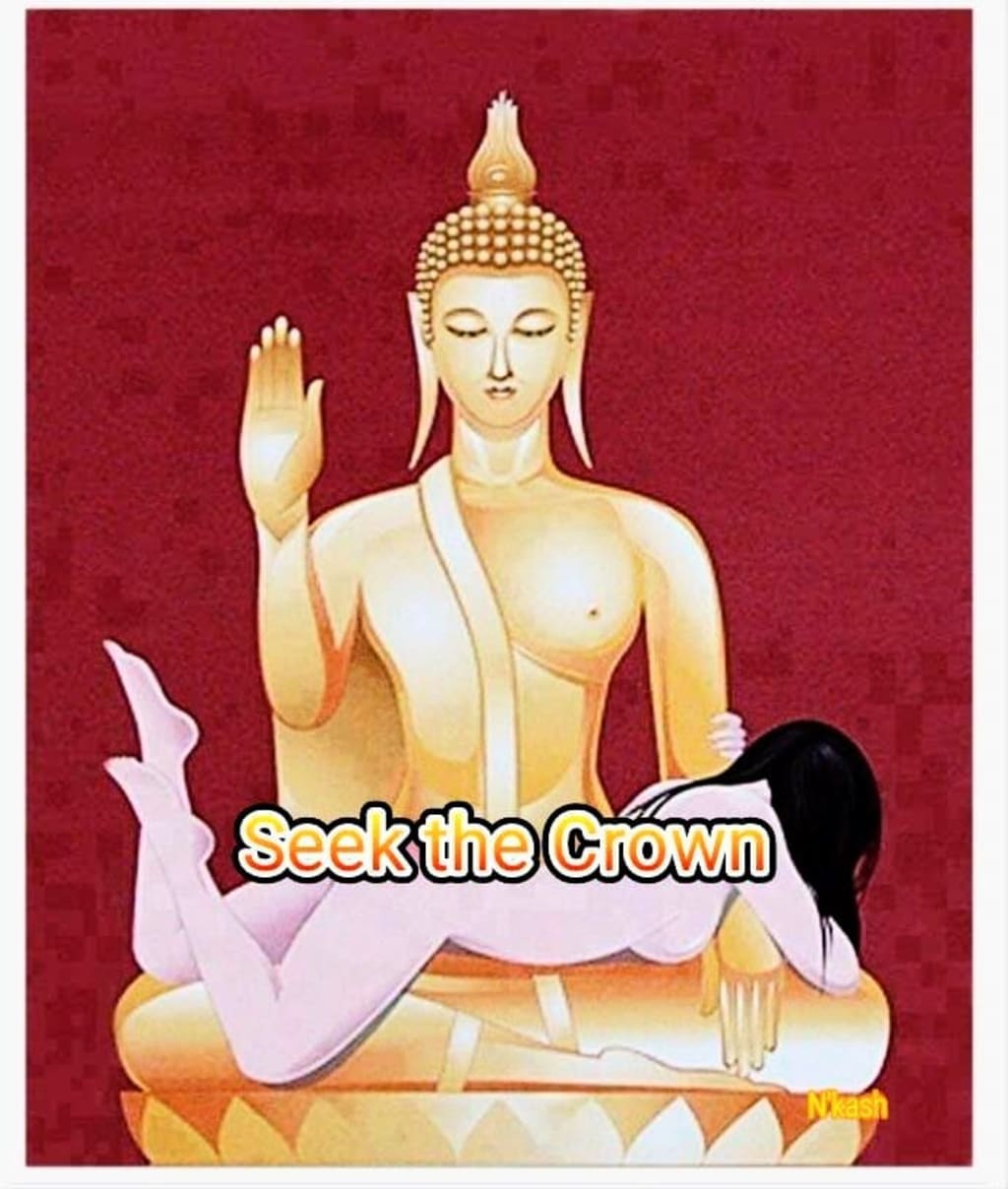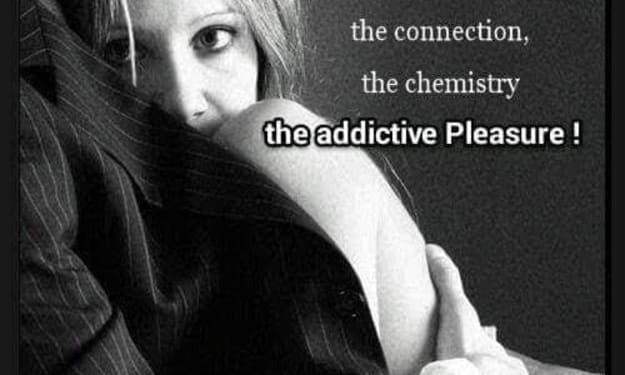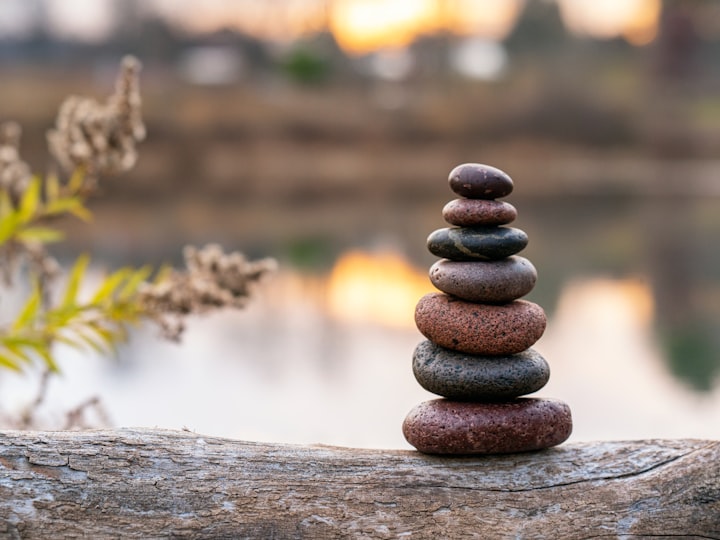A Kinkster's Introduction to Journaling
Tao of The Crown

Journaling is a wonderful way to uncover our thoughts and feelings as we are experiencing situations and through reflecting on our life. The act of writing itself can help to discover and illuminate the hidden, murky, unsure emotions, concerns, worries and reflections from our bodies and our minds. Journaling is a great way to jot down half-formed, foggy ideas so we might shape, develop, and learn from them. Over the years I’ve used journaling to document my thoughts, what I learned, what I wanted to bring forward into my plans and to create connections between seemingly disparate subjects. Journaling is helpful for spotting patterns in our own lives and in the details, we utilize to take on. It’s helpful for exploring our wishes, dreams, hopes, intentions; and for catching and containing our observations and descriptions of the world. There are many different methods of journaling but before I get into that I’d like to talk about how we learn and journal.
Typing is rapid and once I get it on the page my eyes look for the red squiggles underneath the words signaling typos. Sometimes I’m not even doing that. I’m getting it all down on the page and coming back to look it over later with spell check. Documents tend to have their default formatting that most people, including me, rarely change. Handwriting is slow and tends to be more contemplative as I think about how I want to record and organize the information on paper. Fascinatingly, that's precisely why I’ve found handwriting is better suited to learning and often journaling.
Laptops and tablets can make for poor note-taking devices because of the litany of distractions available on the internet, pop-ups, and the opportunity to multitask. Handwriting is often better because it slows the learner down and narrows the person to a singular focus in relation to the task at hand. By slowing down the process of taking notes, you accelerate associations and learning. The mind has more time to think about what it’s focused on and the implications of those connections. Let me give you an example that is almost universally recognized today.
A speedy typist (often revered as an American millennial) is sitting in a meeting, they are able to type out nearly every word that is uttered. And yet: that transcription process doesn't require any critical thinking. So, while they're putting the words down on the word processing page, their brain doesn't have to engage with the content itself. More often than not, our speedy typist will have to look back at their notes when asked a question about what someone said. Since the mind is focused on getting the words on the page it can’t process the words and think critically about them. When your attention is divided it’s not picking up on many of the social signals that the material is important. Getting information recorded is still important but it’s not the only goal most of us have when attending meetings.
When you are taking notes by hand, you won't be able to write down every word the speaker says. Instead, you'll have to look for representative quotes, summarize concepts, and ask questions about what you don't understand. This requires more effort than just typing every word out. The cognitive effort of seeking meaningful connections, what’s important, and linking details to other concepts is what helps cement the material in your memory. The more effort you put into understanding something, the stronger signal you're giving your brain that it's worth remembering. If you want to work with knowledge and thoughts simply transcribing lectures verbatim is not the best approach. You want to look for ways to process the dialogue, relate the information to new and familiar connections, and reframing it in your own words. A focus on transcribing dialogue is detrimental to personal learning unless you plan on working through the transcription and creating notes with it later. Actively working with information can be done electronically or with pen and paper. Honestly assess what you want out of an activity and how you want to work with the knowledge your focusing on. This being said, I have paper and electronic journals and I scan pages to ensure they are backed up. Knowledge management of all this is its own book.
Getting back to the topic of journaling; there are many different ways we can approach journaling. The following are methods that I have tried and encourage others to utilize that I teach and lord over as Master.
Timed Journaling Check-In.
At the same time every day or whenever the cellphone notification goes off, record your thoughts and feelings. This can be done verbally by using a recorder or writing/typing it out. Not everyone has easy access to a PC all the time, so pen and paper, or cellphones have become important journaling implements. You can talk about what’s bothering you, what’s making you smile that day, how your body is feeling, what thoughts you’re having at that moment. Exploring your impression of an experience or mentally preparing for an experience your anticipating is useful. You can record your musings and observations as well as what your establishing as your focus to complete the goals for that day. Speaking aloud can be just as effective for generating and growing your ideas as writing it out. Think about how you will work with this information and retrieve it. Tech tools like a scanner, voice to text, encryption and security, and cloud storage are useful here.
Cornerstone Journaling
Cornerstone Journaling brings together multiple methods of journaling and knowledge management. The formats create searchable (paper notebooks, audio files, notes within books, and personal library) that I link together through an index in a digital file. This is basically establishing an information ecology of your life and thoughts into something akin to an archive of you. You may start to use a notebook and create an index within it, but I advise you to plan ahead and only index what links to that notebook. Then ensure you backup that notebook digitally. I recommend you settle on a program like OneNote or Word where you can utilize a Table of Contents for your Index. I do advise you to format one or two notebooks to compliment your main digital journal. From this moment forward I will refer to your main journal, where everything is backed up, and links back to, as your cornerstone. You build out from the cornerstone and ensure it contains everything that you develop as you expand. For the one or two notebooks, I recommend you set them up by creating an index with several pages in the front of the book, and number every page. You want to make the location of your information as specific as possible because this location becomes the coordinates of information that will be joined by new information without a defined endpoint.
Now the Index of your cornerstone will have its first item(s) to put in the index and those are the one or two notebooks you setup. Describe the notebook and page count. All future chapters or sections on the respective pages of the notebook will be added underneath the notebook heading here. I would periodically scan them or photograph them and put them into your cornerstone too. I prefer to have my text searchable in the cornerstone so that can mean I’m describing pictures with keywords at times also. Look for free OCR applications that will automatically turn your handwritten notes into text within your cornerstone. Now let’s talk about sections that would be useful in your cornerstone. You would create new sections by creating a new page in OneNote or a new chapter in Word. Just make sure your Index gets updated one you create the section/page. Establish a calendar and ensure that it links to phone, computer, and you’re cornerstone. I use Google’s calendar for this as it syncs with all my other calendars. I then create a page for personal tasks and professional tasks. These will be carried over into Google Calendar Tasks with subtasks and reminders. Next, let’s create a new page called Tracking & Lists. Here begin with entering your books in your read pile and if you don’t have any start adding books that inspire you.
Decide on devoting time to reading and schedule it in your calendar. Next, create a new page and call it Reading Notes. Add the first book you have on your list and be sure to add notes from the book here, your thoughts, ideas that come to you from the content, and where in the book you are taking any passages from. These coordinates in the book will help you find it again, credit your sources, and check information later. I like to also note the physical or digital location of the book also. That location for a physical copy might be New Orleans House, bookcase 3, shelf 2. If this is an eBook I reference it like this, eBook folder, backed up 6/2/2019. That backed designation tells me that the book has been backed up on the server within that folder. Add a backup schedule or monthly task to your calendar. You primarily use kindle every book you have will be housed in the cloud there. It makes things easy, but unlike having files on your computer you can’t search through all your books at once for keywords or content. While this strategy does encourage information hoarding it also encourages organizes and taking action with the information you have. Create a page for personal goals and another for professional goals. Take the time to fill these pages out and plan years in the future back to the month. In my book, The Tao of Relationship Maintenance for Mind Controllers, I go over an exercise that does this. You will want to add actions to achieve these goals to your calendar. Schedule them in so you can be sure they are on your mind and you are tracking them.
This tool is wonderful because your actions can also be quantified, measured, tracked, and scheduled by utilizing this method. For example, you just read a book about nutrition and you created notes that could be utilized to start meal planning. You can create the meals you want for each day of the week, list out the cost of each meal to stick to a budget and by calories to stay within a caloric range. A shopping list could be created here, meal preparation and cook times scheduled, and factors such as mood, and adjustments to recipes, and ideas to try next can all be recorded. The cornerstone allows you to see how much control you have over your life, but you have to allow time for regular life audits to look over what you have collected. You have to schedule a time to chart your course for where you go next.
Other pages you may wish to consider are Brainstorms, Achievements Personal and Professional, Gratitude Log, Wish list, Meditation and Hypnosis Log, Dream Log, Service Log, Routine/habit Tracking, Movie Log, Relationship & People Log, Contacts List, Password Log, Maintenance Log, Finance Log, Travel Log, Task Management Log, Reflection Journal, House Rules & Protocol, Life Audit Log, Monthly Themes Log, and Stats Dashboard. What you develop will come to feel like treasures in my life. I have updated and streamlined my routine many times through the years and to this day I still carry with me one or more notebooks along with digital cornerstone almost everywhere I go. You can see in the upper left-hand corner in the picture below where I dated this notebook 7/2/2004 is decorated with coffee stains. I have taken this notebook around the world with me, and I still get inspired by the ideas and experiences I’ve collected here. What you do with this cornerstone method depends upon your ambition and imagination. I promise you that if you utilize this method diligently your cornerstone will hold great meaning to you and anyone you choose to share it with. If you keep up with it you’ll be an organizational force to be reckoned with. Contact me directly if you would like to be trained to do this method.
Correspondence of Masters
The best and brightest have sought each other out to share their thoughts on topics, and their pursuits of knowledge and passions for centuries. Finding people to correspond with means you get access to information, opportunities, and perspectives to contrast your own. Friendship, mentoring, personal, and professional pursuits all relay on these skills and few people tend to engage in formal opportunities where they may benefit from the network and connections this practice brings. Every individual’s network is their social capital that allows them to gain knowledge, practice skills, foster alliances towards common causes, and connect you to opportunities. Social capital is the networks of relationships among people who live and work in a particular society, enabling that society to function effectively. Consider the effort needed to maintain your social capital the first step towards recognizing any goal you have that affects others a social goal. To begin this form of journaling you’ll need someone you can commit to writing a letter or email to each other at least once a month, but preferably every week. Write about how your days are going. Write about your wishes, triumphs, trials, frustrations. Write about anything you’d like your friend to know. Share your passions and explore collaborative ideas that you can build on naturally and easily. Respond to your friend’s concerns and questions. At the end of six months look back through your correspondence to them and take notice of your thoughts and reactions at different points in time. You’ll be creating a historical record of your life but also learning about the world from another’s perspective.
When it’s time to relax and just chat with friends, the last thing on most people’s minds is that this can be an opportunity to learn something new, become more creative or get a different perspective on life. This kind of journaling will keep your knowledge of global stocks or wilderness survival skills fresh. Your not just expanding knowledge but engaging in vicarious experiences with people who may be a professional in the field or have at least done plenty of research on it. Some people will have tons of practical skills and experience in a few fields, while others will have plenty of information about minute details on certain areas of their chosen field. This form of journaling works by making you do the work to focus on yourself, to think about concepts and relationships, and be able to practice conveying meaningful messages that hone skills of impression management. There are four types of Social Capital that are culturally communicated and developed through correspondence.
Bonding Capital - used among family and close friends to reinforce existing relationships.
Bridging Capital - used among acquaintances to become closer to people.
Linking Capital - used among individuals that have organizations in common such as employees of the same company.
Identifying Capital - used among groups with shared beliefs and interests, most often political or ideological.
Actively engaging in this correspondence means you’ll have to engage with conversational topics. Engaging in conversation will encourage you to talk with others. Soon you’ll find yourself in the company of experienced, skilled, well-read and interesting individuals much more often. Don’t shy away from old friends or make your relationships quid pro quo, but seek to gravitate towards people whose company you enjoy and who can help you evolve. This way every relaxing afternoon or night out with friends becomes a unique learning experience. Many people today struggle to be aware of their own stories never mind the stories of people that surround them every day. Should you be interested in this reach out and say hello.
Journal from The Perspective Others’
Life is busy and sometimes you need to get out of your own head. I’ve found it helpful to periodically journal as if from the perspective of other people in my life. I begin writing as if someone else in my life is writing in their journal about me and what I want to do or have done. I don’t seek to write in a judgmental or presuming manner, but rather in a style that gives them the benefit of the doubt of the person I’m taking on, and views me as I must appear to those who don’t have a view of my thoughts and feelings. The perspective often begins to take on a life of its own and it helps to understand others and how they might be perceiving you. I’ll write about what they may desire and expect from me, and whether I’m meeting those desires and expectations. I’ll also write about things they may be desiring, but not communicating so I can explore ways we might better work together and communicate. This method is a descriptive perspective-taking that can make you feel better about improving interactions with even the most difficult of people. The worst case scenario is you craft the perfect villain for that novel you’ve been sketching out. Smile.
A journal is a place to record daily happenings of our fast-paced life. It’s also far more than that. A journal is a tool for self-discovery, personal development, an aid to concentration, a mirror for the soul, a place to generate and capture ideas, a safety valve for the emotions, a training ground for the writer, and a good friend and confidant. Journals help you have a better connection with your values, emotions, and goals. When you journal about what you believe in, why you believe it, how you feel, and what your goals are, you better understand your relationships with those things. My journals have captured many twists and turns in my life. They are what I build upon as I write this. You too are collecting together the stepping stones of future inspiration and action. If you’re reading this you’ve stepped into my story and started to engage with this relationship. Let’s make it a good one!
Joseph Crown
My work is created to interact with those that enjoy themes of hypnosis, influence, and power exchange. Please share them as this brings others attracted to these themes into our circle. These words were created with passion, kindness, and appreciation in order to share what I enjoy with those seeking the right fit, together. That's just part of the benefit and pleasure of sharing. It also makes me happy. :> Seek the Tao of the Crown!
Like my content? Buy me a coffee and become a patron of the hypnotic arts!
https://www.buymeacoffee.com/Taoofthecrown
Joseph W Crown
Enjoy your toys and give the gift of Mind Control to those deserving few.
Private discussion and development group
https://www.facebook.com/groups/1271216662923632/
You can find Instruction of The Hypno Dom: A Master/slave Lifestyle Development Training on Erotic and Authoritarian Hypnosis live on amazon at https://www.amazon.com/dp/B07RNHLFKS
Paperback Version https://www.amazon.com/dp/1097967212
Seek with your passion, and journey with a welcoming heart and grateful spirit. We are all unknowing seekers who bring with us stories describing the path we've tread. To live with mind controllers you must be accepted as their tribe, learn their dance, and never forget that this is but another hat to wear.
You can find The Tao of Relationship Maintenance for Mind Controllers live on amazon at www.amazon.com/dp/B01MPZQ7SL
Paperback Version https://goo.gl/HJ1OUo
Subscribers of The Tao of The Crown, www.taoofthecrown.com will be randomly offered goodies not released to the public. Have you signed up?
About the Creator
Joseph Crown
My work is created for those that enjoy themes of hypnosis, influence, and power exchange. Please share them as this brings others attracted to these themes into our circle. Seek out the Tao of The Crown.






Comments
There are no comments for this story
Be the first to respond and start the conversation.